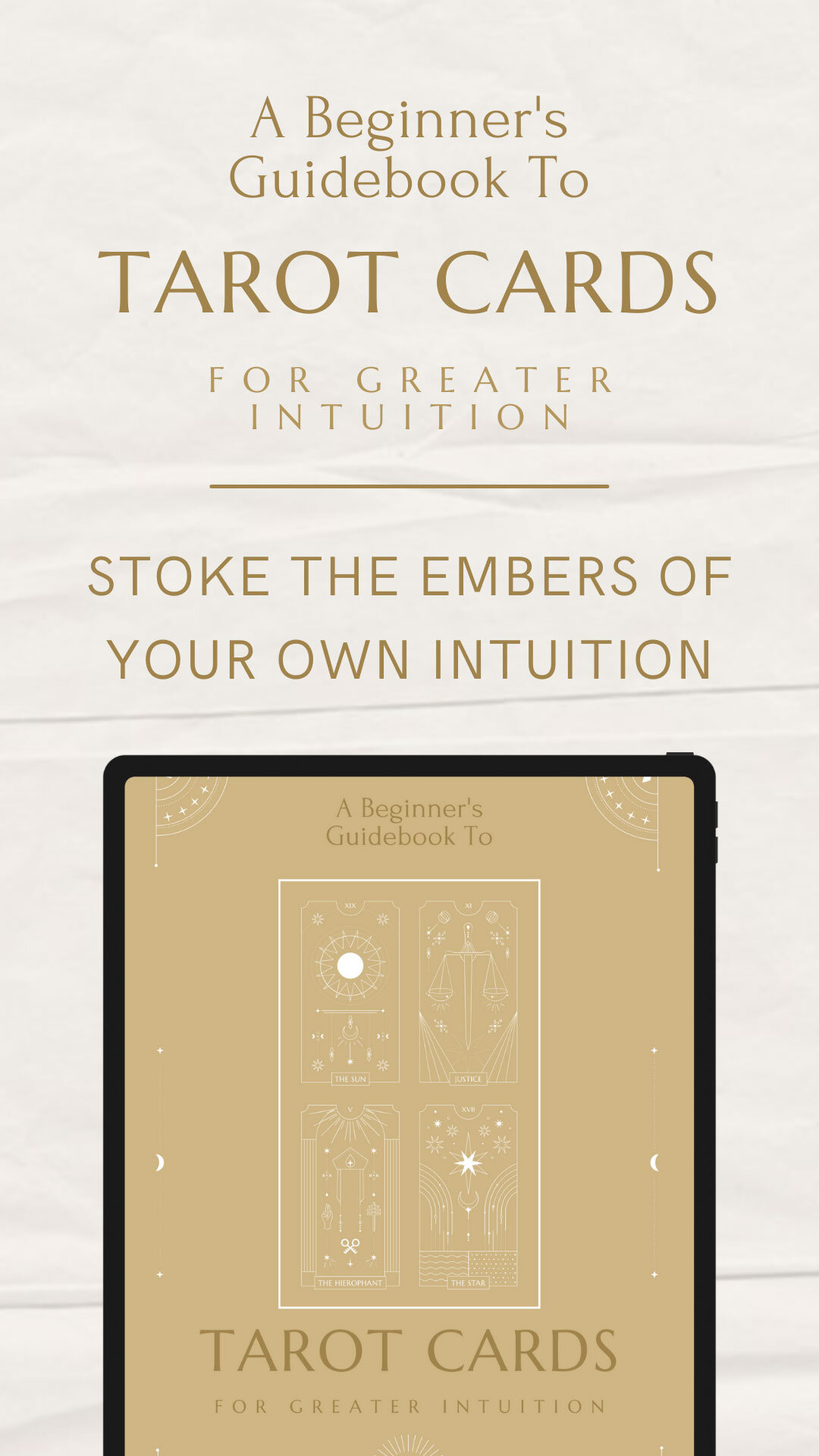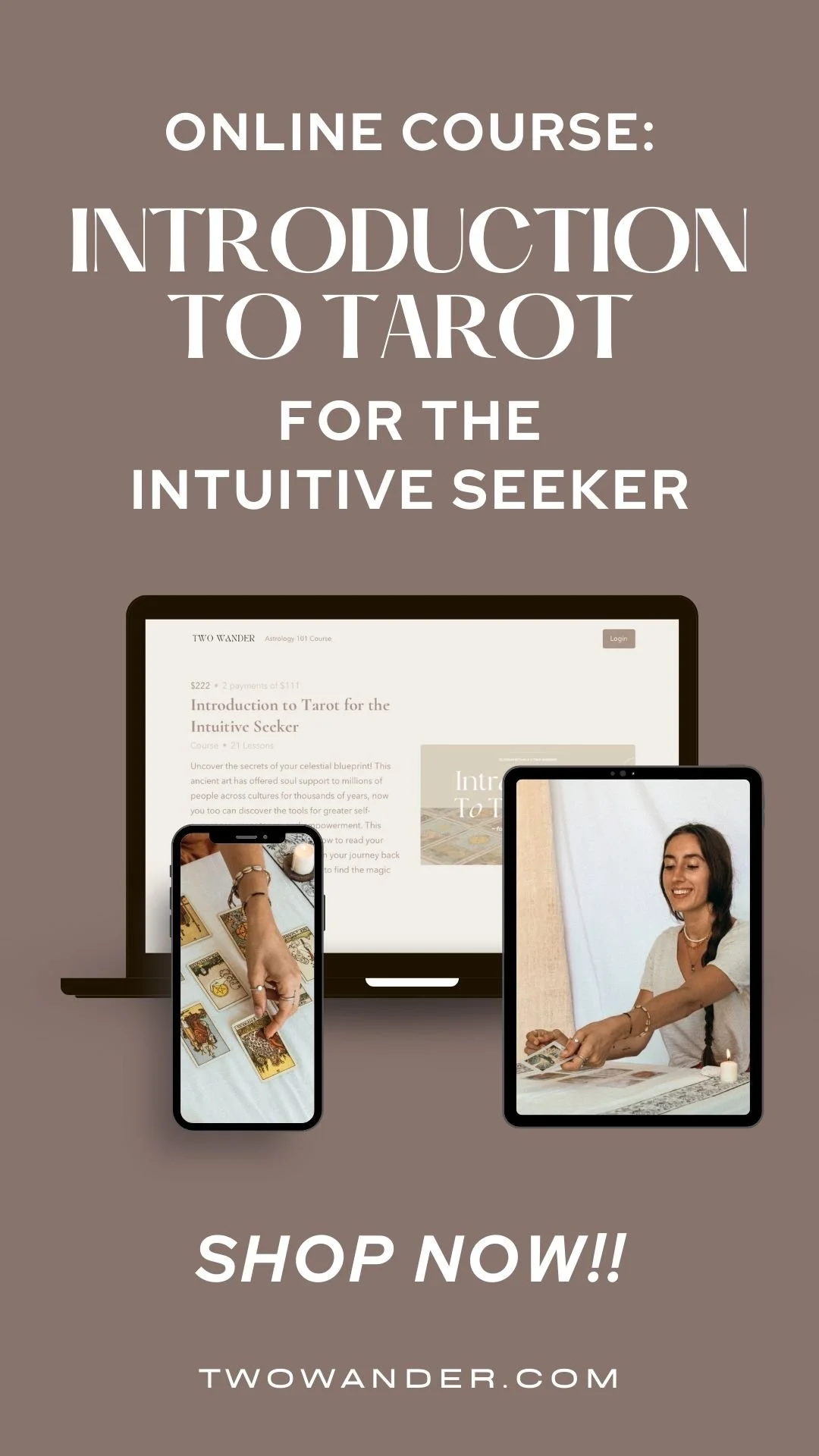How To Use Tarot Cards For Stress Management
Please note this post may contain affiliate links. Any brand we partner with is based on our personal recommendations that we love and trust you will too. If you choose to purchase through these links, we may receive a small commission at no extra cost to you. By using these links you are directly supporting Two Wander to continue creating free content to stoke your curiosity for conscious wandering + holistic well-being. Thank you!
How To Use Tarot Cards For Managing Stress
I was first drawn to tarot cards after my initial foray into astrology last year (read more about that here) and boy have they served me well for the year 2020 has turned out to be haha! Although I was originally skeptical, all that changed when I learnt that tarot cards aren’t actually supposed to tell the future (even though some people do use them for divination) but more as a tool to tap into your own innate intuition; so I became more curious and open to try they out because this is an aspect I wanted to expand on in myself!
Thought to originate in Italy some time in the 1440s, they were first used as a parlour game and later developed into cartomancy and contacting the spirit world. Nowadays, they can be used for all these avenues and everything in between, some people even use them to help deal with acute anxiety and panic attacks! Personally, I like to pull them out once a month to gauge where I should focus my attention, and then whenever a specific event happens in life that I need help figuring out what to do with, they always help sharpen my decision-making skills and reassert my confidence.
If you’re interested in a bit more of a breakdown of how to use tarot cards, some of the cards’ meaning and different spread options, read on below.
Tarot Card Meanings And Spreads
A tarot reading can really be done whenever you feel like it and at any time of day, as long as you won’t be disturbed, and will be particularly powerful if you time it with the cycles of the moon. It is generally advised for you to centre and ground yourself before to create a bit of distance if a particularly triggering thing has happened that you’re trying to make sense of so that you don’t skew the potential meanings by being overly emotionally involved. You can also perform tarot readings for others but, again, should make sure to not be too involved in the question at hand so the person can come to their own conclusions without being influenced by you too much.
Generally, the most widely circulated and used tarot deck is the classic Rider-Waite one, but there are loads of really beautiful other options (such as these beautiful art deco ones) too!
To learn more about the world of Tarot, enrol in my Intuitive Tarot Course!
Tarot Card Spreads
There are many different types of tarot spread, starting from the basic 1-card to 3-card pull. If you want to get a feel for the day or a simple answer to a question (yes/no type for example), then a one card pull could be an option. If not, one of the most popular spreads, that is especially useful for starting out with so as not to get overwhelmed, is the classic 3 card pull. This could represent the past, present and future; an event, action and outcome; or something entirely different. It’s a really versatile spread that allows you the freedom for interpretation without being too simplistic. Then, there are the more complex spreads going all the way up to a 10-card Celtic cross and really an endless variety of other types- you can find some more tarot spread options here but the choices available online are many! Simply find one that resonates with you, I like to try and mix it up with a couple new spreads each month depending on what I feel like exploring at that time.
How To Do A Tarot Reading
To begin a reading, start with the tarot deck in your hand and take a few deep breaths to centre yourself. Think about the question you want answered or the situation at hand and meditate on it silently to yourself until you feel ready. Then knock on the deck to distribute your energy through the pack and shuffle it however you like. This could be like a normal deck of cards; spreading them all out then picking them back up again; and/or cutting the deck. Still musing on your question, pull the cards out into the spread you have chosen, pausing briefly after each one (this could be the top cards or you can leave them spread out face down and pick the ones that call to you). Before looking up any card meanings, check in and see what you instinctively feel about each card and the spread’s message as a whole. Finally, you can look up what each card means and how you interpret this for your specific situation.
Some people also like to “cleanse” their deck and themselves before or after a reading either by using crystals, incense, essential oils, herbs, smoke wands or white light visualisation. You can also set up more of an atmosphere by lighting some candles and playing some relaxing music.
Tarot Card Meanings
A tarot deck contains 78 cards, 22 of which are called the “major arcana” as they deal with the bigger things in life. Then there are 56 “minor arcana” that represent the smaller, but no less important, parts of life. The major arcana start at 0 with The Fool and end their cycle with The World. There are some often misunderstood and feared cards in tarot, such as the Death card that does NOT actually indicate physical death but rather the death of something (such as a relationship, job, habit) in order to bring about the new- so it can actually be quite a good card depending on your circumstances. The Tower, on the other hand, is more disruptive and represents a significant, often troublesome, upheaval and change in ones life.
The minor arcana are then broken down further into 4 suits: Wands (a fire symbol which represent actions); Swords (an air symbol, which represent thoughts); Pentacles (an earth symbol representing money); and Cups (a water symbol representing emotions). Each of these has 14 cards each and portray a different meaning/aspect of life. Most decks will come with their own explanatory insert, but you can also read more about the specific tarot card meanings here.
I wrote an article for the lovely Oui We Girl too detailing a bit more about the whole process which you can read about here.
Overall, reading tarot is a really fun, personal, and customisable practice that can serve whatever purpose you choose! As mentioned, I particularly like them for strengthening my intuition and confidence in decisions during stressful times, but also like them to get a feel for the month ahead. You could use them to gain insight on relationships, health, money and more. Have a play with them and figure out what kind of styles and desired outcome you like most!
Click here for a full list of the meanings of all 78 cards, or access the magic of their wisdom directly with a personalised Tarot Reading from me!
So that’s a brief overview on how tarot cards work and how to use them for stress management. I’ve personally found them really insightful and would love to hear about your journey with them in the comments section below! Or, if you’ve got any other questions I’d gladly try to answer them :)
If you’re interested in other stress management techniques I use, check out my posts on Free-Flow and Gratitude Journalling and Mindful Meditation.
And for monthly Tarot guidance along with other mystic magic, join me in the Spirit Subscription! ✨






















